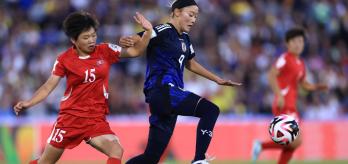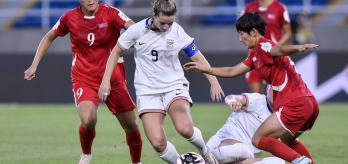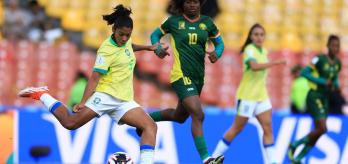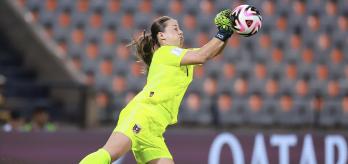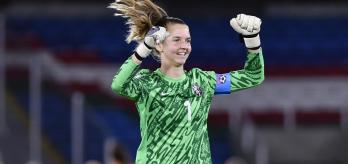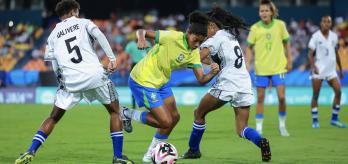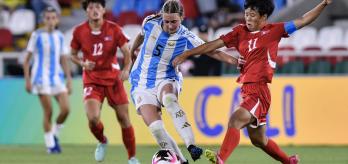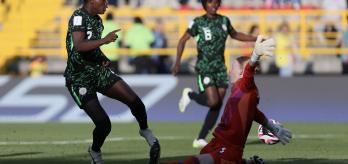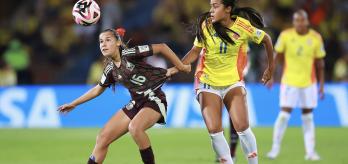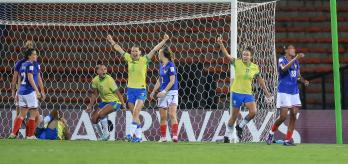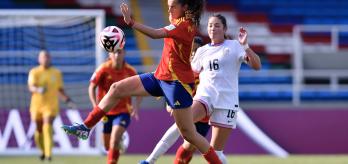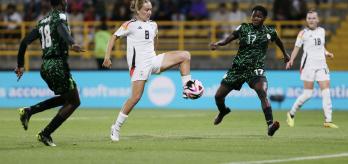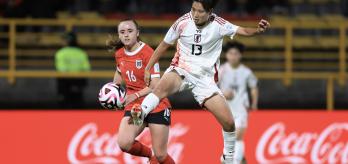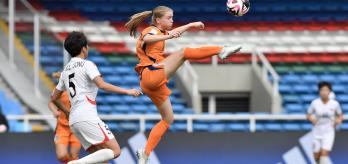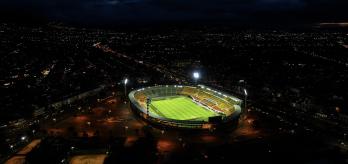Beaten finalists in 2022, Japan dominated Group E with three wins from three. Debutants Austria impressed as they secured second place and advanced to the knockout stages, while Ghana and New Zealand finished third and fourth respectively in what was a competitive group.
Japan
In possession
Japan are a very technical team with players that can play the ball with a high degree of accuracy and at great speed. Positionally, their players are versatile, showing they can rotate and interchange with ease, whether they start the game or enter as substitutes. They love to build their play centrally using inverted wide defenders and more traditional wide-channel play. They play with minimum touches of the ball, meaning it can be difficult for opposition teams to get direct pressure on their possession and they are clever at anticipating where the space will become available and accessing it.
Out of possession
Because Japan play so close together when in the opposition’s final third, they can be effective at applying counter-pressure when they lose the ball high up the pitch. Because they tend to be narrow in their attacking play, at times they can be vulnerable to wide area counter-attacks.
Austria
In possession
An impressive debut from Austria has seen them demonstrate their ability to play a combination of the direct and indirect game. Goalkeeper Mariella El Sherif (1) has real variety in her distribution, and she can mix up their in-possession game by starting play with long or short passes. With attacking-minded full-backs, they like to switch the point of attack from left to right and create dangerous goal-scoring opportunities from build-ups and counter-attacks.
Out of possession
A very hard-working team when they don’t have the ball, Austria will press in a variety of ways depending on the situation they are facing. They press high for opposition goal kicks but also use compact, low blocks when they cannot get pressure on the ball higher up the pitch. Goalkeeper El Sherif has also been a key player when out of possession, making a number of important saves at key moments of games.
Ghana
In possession
Ghana are a very committed team but at times they struggled to keep possession when building play under direct pressure. They were more effective when going direct and delivering crosses from wide areas with multiple players making attacking runs into the penalty area. On transitions to attack, they looked to advance their play quickly using the wide areas to get the pacy Jennifer Owusuaa (5) on the ball while Stella Nyamekye (10) had a dangerous strike of the ball from range.
Out of possession
At times, Ghana spent long spells without the ball, working hard collectively and absorbing pressure. Using a 1-4-2-3-1 formation out of possession, they applied direct pressure when opponents tried to progress through their block.
New Zealand
In possession
Using a 1-4-3-3 set-up with two holding midfielders, New Zealand built their play in a traditional way without much interchange or positional rotation – typical of the classic 4-3-3. Their players were positive in their attitude in trying to build attacks but at times struggled to by-pass intense opposition pressure. It was visible that this is a developing team who will definitely grow from the experience of facing some very strong opposition and different attacking styles.
Out of possession
New Zealand usually sat in a 1-4-1-4-1 or 1-4-4-2 mid-block with the intention of denying access to the central space and forcing their opponents wide. At times their forwards initiated the press, but the other units did not step with them and this left gaps that other, more experienced teams could exploit. Their centre-backs were proactive at defending on the front foot when opposition forwards dropped in to receive with remaining defenders closing the spaces vacated. However, at times, this left them unable to exert direct pressure when the ball was moved into the wide areas.






